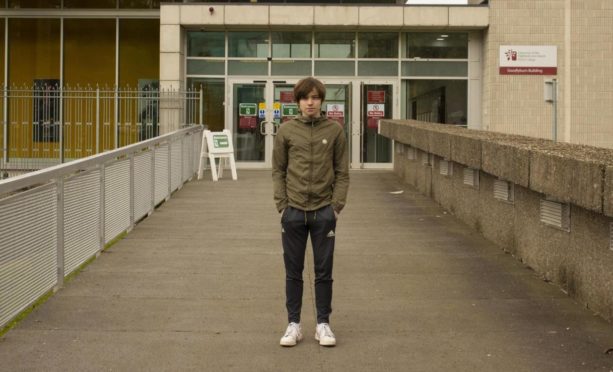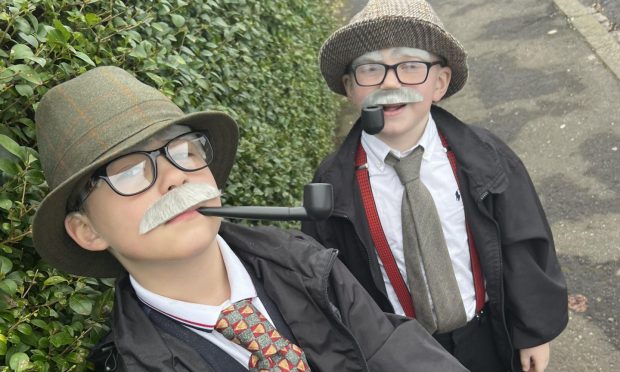Reuben Glover, 18, is an S6 pupil at Kinross High School undertaking a foundation apprenticeship in creative and digital media with DCT Media. Here he gives his account of how the pandemic has affected his generation.
“When Covid-19 emerged in early 2020, many thought it would be a matter of weeks before it is gone and in a year’s time, we will not even remember it.
Yet over a year later we are just beginning to see the light at the end of this very long tunnel.
Countless people have been affected by the virus, some more than others; healthcare professionals, business owners, elderly people and, of course, young people.
Those in education have had many challenges to overcome throughout this pandemic, socially and academically.
As an 18-year-old boy coming to the end of his time at secondary school, I have witnessed first-hand the trials I and my peers have met during our time with this pandemic.
Remote learning
Obviously, one of the biggest issues we face as young people learning during a pandemic is the supreme lack of consistent in-person learning throughout this past year.
Since my first days at primary school, when I had a question about the work assigned, it would only be a matter of raising my hand and asking the teacher. Yet suddenly, in March we were flung into working remotely and having virtual lessons.
For the first time ever, asking a question was a matter of scanning your work, emailing it to your teacher with a question and awaiting an answer for, in some cases, as long as a day.
For some, perhaps, remote learning would be welcomed as maybe they do not enjoy being in school and can complete all the required work at home without an issue, but for most I would reckon, this is not the best set-up.
One of the biggest issues we face as young people learning during a pandemic is the supreme lack of consistent in-person learning throughout this past year.”
Even with all the virtual schooling technology, such as Google Classroom and Sway, it is not ideal to rely on video calls and emails to learn and to complete work.
Anxiety and uncertainty were rife in the beginning, yet for those who would walk to the guidance teacher to talk about these worries, that also was not an option.
Though I am sure working from home and learning remotely could be seen as a prime example of ‘first world problems’, this is still a big change for us and an ordeal we will not soon forget.
Remote learning was not the only issue caused by Covid-19 and working from home – there were many others.
Tough home environments
For example, though not in my case, some dislike home learning due to tough home environments. Those whose homes are loud and filled with young children may find it hard to concentrate on work and struggle completing tasks.
For some, their home environment is not a place of comfort and they don’t enjoy spending prolonged periods there, whether due to physical factors such as location or technology at their disposal. Maybe they have an unsteady relationship with a parent or guardian.
Lockdown has been a time rife with reports of domestic violence and problems arising from people being stuck with those who treat them badly. This is not restricted purely to adults.
Teenage years are a time of stress and change for people as they become young adults. One of the biggest comforts during these times is the ability to speak to other people your age about what you are going through.
There is a difference between talking via Snapchat and talking in person.”
Yet when school was online and meeting up prohibited, some found themselves alone with their thoughts for weeks on end. While online communication among young people has been second nature since we were children, there is a difference between talking via Snapchat and talking in person. A certain intimacy cannot be conveyed over text.
The lack of sustained face-to-face contact among young people has had a marked impact on mental health and mood throughout these lockdowns and it is known that countless young people have been faced with anxiety and low mood not known before Covid-19.
This is something that I hope is addressed better in the future on a grander scale in order to avoid these issues happening again.
Stronger because of it
Overall, we have all had a hard time during this pandemic and you would be hard-pressed to find somebody who has not faced issues throughout this past year.
Young people have faced a unique type of problem throughout the virus, whether it be remote learning or lack of sustained social interaction.
People my age particularly – 17 and 18-year-olds – have been tried and tested greatly, having had to complete some of the most important qualifications of our lives under conditions unseen before now.
And I believe we are stronger now because of it.”
Foundation apprenticeships are work-based learning for S5 and S6 pupils which lead to an industry-recognised qualification at Higher level.
Young people spend time out of school at college or with a local employer, and complete their apprenticeship alongside their other National 5 and Highers courses.
Meet two teens who have secured jobs through foundation apprenticeships despite pandemic challenges










